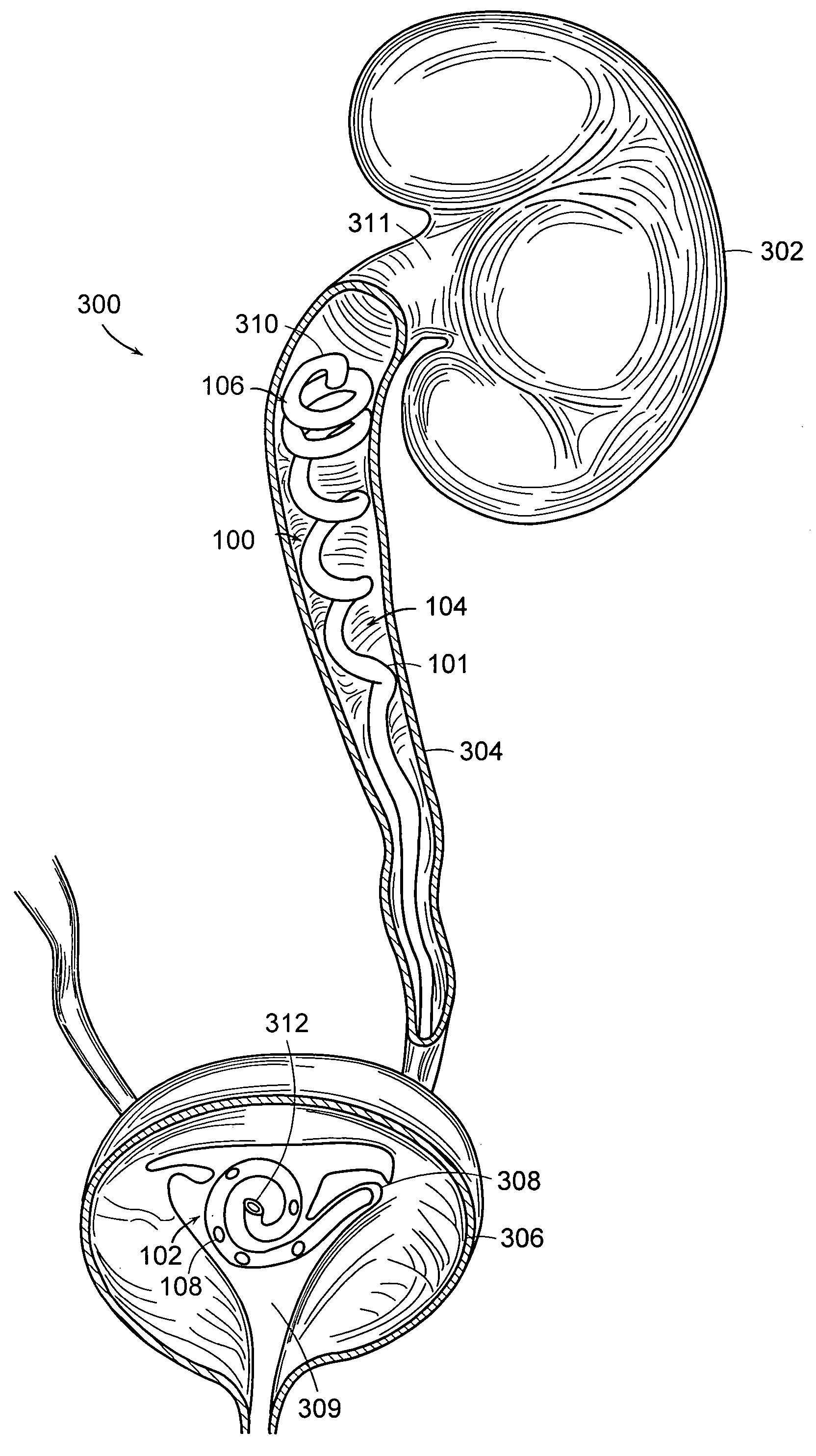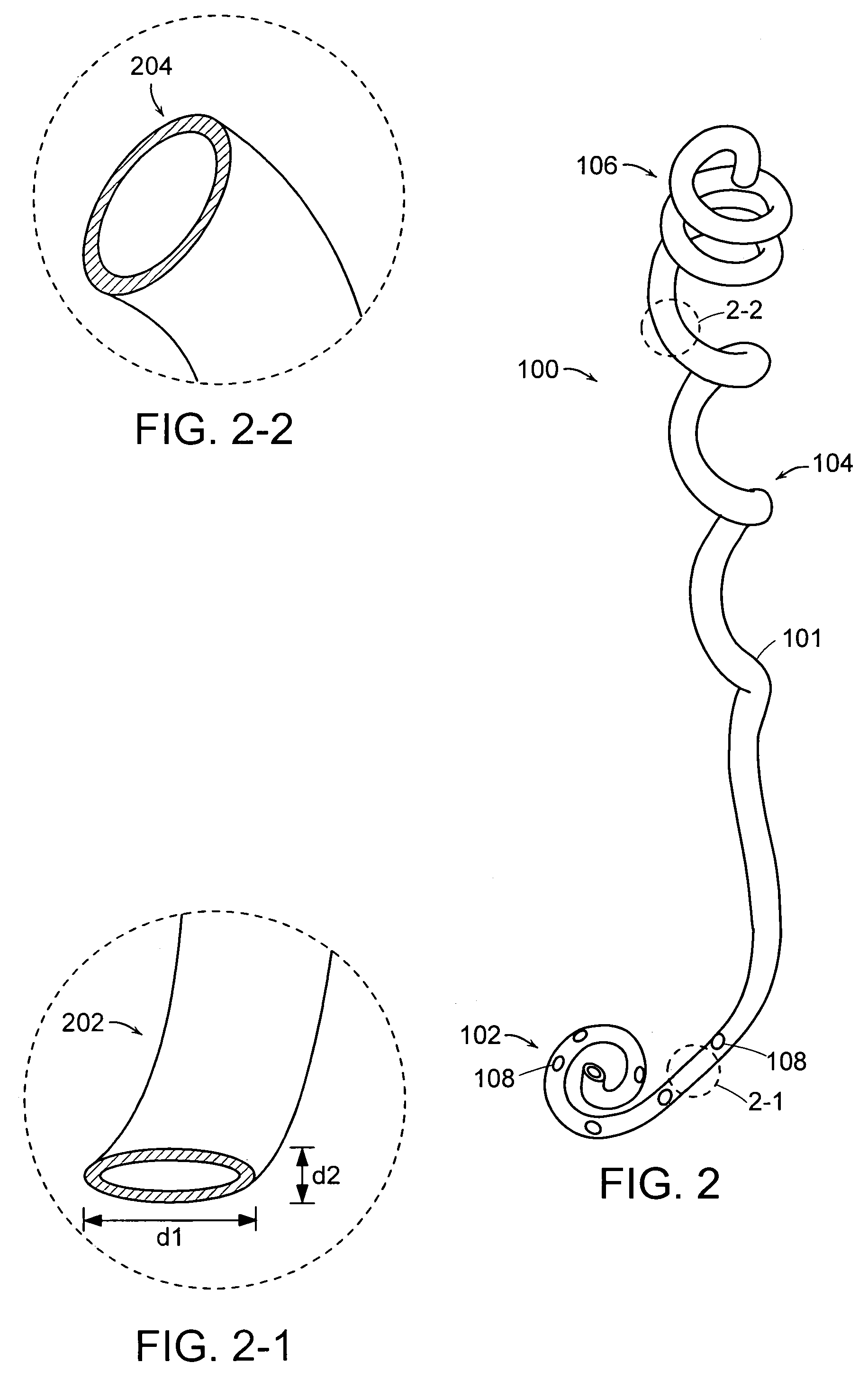Ureteral stent configured for improved patient comfort and aftercare
a ureteral stent and patient technology, applied in the field of stents, can solve the problems of stent migration and displacement, kidney dysfunction and eventual necrosis, swelling and inflammation of the upper urinary tract and the kidney, etc., to achieve less irritation, less rigidity, and ease pain and irritation.
- Summary
- Abstract
- Description
- Claims
- Application Information
AI Technical Summary
Benefits of technology
Problems solved by technology
Method used
Image
Examples
Embodiment Construction
[0017]The invention provides a ureteral stent configured for improved patient comfort and aftercare. In one embodiment, the stent has a distal portion with a somewhat flattened, non-circular cross-section, thereby providing a more flexible, less rigid, self-aligning lumen in the sensitive trigonal region of the bladder. In another embodiment, the stent features a proximal portion with a helical coil shape to allow self-anchoring of the stent below the kidney, at or below the renal pelvis. Furthermore, one embodiment includes a stent with a portion along its length having an irregular coil shape to allow self-adjustment of the stent with ureteral movement. Other embodiments of the invention include stents with various combinations of the aforementioned features.
[0018]Additionally, the invention provides a method of self-adjusting the effective length of a ureteral stent to compensate for patient movement, thereby providing improved patient comfort. An embodiment of the method include...
PUM
 Login to View More
Login to View More Abstract
Description
Claims
Application Information
 Login to View More
Login to View More - R&D
- Intellectual Property
- Life Sciences
- Materials
- Tech Scout
- Unparalleled Data Quality
- Higher Quality Content
- 60% Fewer Hallucinations
Browse by: Latest US Patents, China's latest patents, Technical Efficacy Thesaurus, Application Domain, Technology Topic, Popular Technical Reports.
© 2025 PatSnap. All rights reserved.Legal|Privacy policy|Modern Slavery Act Transparency Statement|Sitemap|About US| Contact US: help@patsnap.com



